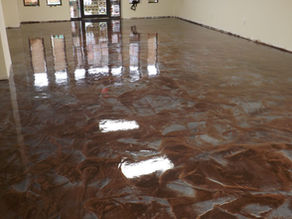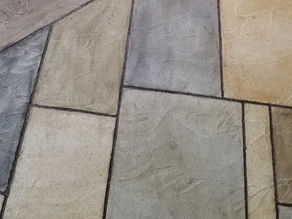top of page

Serving K-W Cambridge Guelph Stratford
Woodstock Areas for over 18 years
Search


Snow Removal Cost in Ontario, Canada — 2025-2026 Guide for Homeowners
Professional Snow Removal Services in Ontario
Stay ahead of winter with expert snow removal and snow clearing services across Ontario. Our team specializes in driveway snow clearing, sidewalk snow removal, and residential snow plowing to keep your property safe and accessible all season long. We use equipment designed for concrete driveways and walkways, preventing scratches or damage while removing even heavy, packed snow. Whether you need one-time snow removal, seasonal sno

Jon
Nov 114 min read


❄️ First Snow storm in Ontario: Snow Removal Tips & How to Protect Your Concrete Driveway
The first snow of the season has arrived across Ontario — covering everything in a white blanket and officially kicking off winter. But before you grab that shovel or snow plow, there’s something every homeowner should know: how you remove snow can make or break your concrete driveway and patio . At The Art of Concrete , we’ve seen how winter damage often starts with the wrong snow removal tools or de-icing products. So, with the first snow falling, here’s how to keep your c

Jon
Nov 93 min read


Job Openings
Looking for rewarding construction jobs in Ontario? The construction industry continues to thrive, offering stable careers, great pay, and opportunities to learn valuable hands-on skills. From concrete finishing and carpentry to project management and site supervision, every role plays a vital part in shaping our communities.
At The Art of Concrete, we’re always seeking skilled and motivated individuals who take pride in quality workmanship and teamwork.

Jon
Nov 93 min read


Hiring the Right Concrete Contractors in Canada
When it comes to transforming your outdoor space with concrete, choosing the right team can make all the difference. Whether you’re planning a new driveway, patio, or decorative walkway, the quality of work depends heavily on who you hire. I’ve learned that finding skilled professionals who understand your vision and deliver durable results is key. Let me walk you through what to look for and how to make the best choice for your project. Why Hiring Concrete Contractors Matter

Jon
Nov 44 min read


Transform Your Space with Custom Concrete Designs
When I first started exploring ways to upgrade my outdoor space, I was amazed at how versatile concrete can be. It’s not just about plain grey slabs anymore. Concrete has evolved into a creative medium that can add style, durability, and personality to your home. Whether you want a sleek modern patio, a charming walkway, or a unique driveway, decorative concrete ideas can transform your space in ways you might not expect. Let me walk you through some inspiring ideas and pract

Jon
Oct 305 min read


Understanding Concrete Repair Costs in Ontario
Concrete repairs are essential for maintaining the integrity of your outdoor spaces. Whether it's your driveway, patio, or sidewalk, keeping these surfaces in good condition is crucial. Why Concrete Repairs Matter Concrete surfaces can look functional but hide underlying issues. Over time, factors such as freeze-thaw cycles, soil settlement, poor compaction, water infiltration, and heavy loads can damage slabs. Left unchecked, minor damage can evolve into major structural pro

Jon
Oct 213 min read


Concrete Driveways vs. Asphalt in Ontario: What’s Better for Our Climate?
When it comes to choosing between concrete and asphalt for road construction, the debate is as solid as the materials themselves. Concrete offers greater durability and requires less maintenance over time, making it ideal for high-traffic areas. Asphalt, on the other hand, is faster and cheaper to install, with a smoother ride and easier repairs. In this visual comparison, we break down the key differences in appearance and performance to help you understand which surface sui

Jon
Oct 212 min read


Where to buy concrete driveway sealers in Canada
Concrete sealers not only protect your surfaces from moisture, salt, and wear but also enhance the overall look of your concrete. From glossy “wet look” finishes to breathable penetrating sealers, each type serves a unique purpose. Trombetta Construction Materials offers a full range of sealers ideal for exposed aggregate, broomed, or stamped concrete — keeping your driveways, patios, and walkways looking their best year after year.

Jon
Oct 123 min read


The Cost of Garage Floor Tiles in 2025: What You Need to Know
If you’re considering upgrading your garage floor, tiles are one of the most popular and practical choices today. They’re durable, easy to install, and instantly transform a dull concrete surface into a clean, professional-looking space. But how much do garage floor tiles actually cost — and are they worth the investment compared to epoxy or polished concrete? Let’s break it down. Types of Garage Floor Tiles Before diving into prices, it’s important to know that there are sev

Jon
Oct 73 min read


Continued Blog (Late 2025): The Real Cost of a Concrete Pad in Ontario — What’s Changing
As 2025 wraps up, concrete pad costs in Ontario have remained steady — but scheduling, respect, and communication now play a bigger role in pricing. Learn how early booking, good relationships, and timely payments can help you save 10–15% and secure your spot for 2026 concrete projects.

Jon
Oct 72 min read


Why Fall is a Great Time for Concrete Projects
Fall is an ideal season for concrete projects in Ontario. Cooler temperatures and less busy schedules mean faster completion, better curing, and often lower costs. Planning your project in the fall ensures quality results and avoids the spring rush.

Jon
Sep 252 min read
🔨 Hands-On Concrete Course – Stamped & Exposed 🔨
This November, join our exclusive hands-on concrete workshop in Kitchener, Ontario, where you’ll learn the real-world techniques of...

Jon
Sep 152 min read


2025 Exposed Aggregate Concrete Cost Guide – Kitchener, Waterloo, Cambridge, Guelph & Stratford
Exposed aggregate concrete is gaining traction among homeowners and builders in Kitchener-Waterloo, Cambridge, Guelph, and Stratford. With its appealing look and long-lasting resilience, it’s an attractive option for patios, driveways, and walkways. However, the costs linked to exposed aggregate concrete can vary significantly based on several key factors. In this article, we’ll explore these costs in detail and equip you to better plan for your next construction project. Und

Jon
Aug 45 min read


How to Choose the Right Concrete Finish for Your Driveway, Patio, or Pad in Ontario
Choosing the right concrete finish affects your project’s look, safety, durability, and maintenance. Broom finish is practical and affordable, stamped concrete is decorative and customizable, and exposed aggregate offers slip-resistance and style. Combining finishes creates unique designs. In Ontario’s climate, the right choice ensures long-lasting results. At The Art of Concrete, we help homeowners pick the perfect finish for driveways, patios, and steps.

Jon
Jun 223 min read


What Goes Into a Concrete Pad? Finishes, Features & Options Explained
Thinking about pouring a concrete pad but not sure what affects the price? From broom finish to stamped or exposed aggregate, plus proper base prep, reinforcement, and drainage—there’s a lot that goes into building it right. In this post, we break down your finish options, what to expect beneath the surface, and how to choose the best pad for your needs and budget in Ontario. Don’t just price it—understand it.

Jon
Jun 223 min read


How Much Does It Cost to Repair Concrete Steps, Sidewalks, Driveways, and Patios in Ontario?
Is your concrete cracked, spalled, or faded? Homeowners across Ontario are choosing affordable concrete repair instead of full replacement. At The Art of Concrete, we restore driveways, patios, steps, and stamped surfaces in Kitchener-Waterloo, Cambridge, Guelph, and Stratford. Repairs are faster, cost-effective, and long-lasting. Get a free quote and bring your concrete back to life today!

Jon
May 12 min read


Unlock the Future: 2025 Front Entrance and Sidewalks Promotion! Book Now with Easy Payment Options!
Upgrade your front entrance and sidewalks with The Art of Concrete! Enhance curb appeal, safety, and style with premium materials like stamped or exposed aggregate concrete. Enjoy flexible payment options, quick online booking, and expert craftsmanship in Kitchener, Waterloo, Cambridge, and Guelph. Transform your home’s entryway today—book your consultation and create a stunning, durable, and inviting walkway.

Jon
Apr 103 min read


Conquer the Winter Weather: Expert Snow Removal Services in Kitchener, Waterloo, Cambridge, and Stratford - Your Secret Weapon Against Snow!
Stay safe this winter in Kitchener, Waterloo, Cambridge, and Stratford with professional snow removal services. From residential driveways and sidewalks to commercial parking lots, expert teams ensure clear, safe, and accessible surfaces. Flexible contracts, quick response, and local expertise make winter worry-free. Protect your property, reduce slip hazards, and enjoy hassle-free snow management this season with trusted local snow removal professionals.

Jon
Mar 193 min read


How to Repair Damaged Concrete: A Step-by-Step Guide to concrete repairs
Extend the life of your concrete with expert repairs in Kitchener, Waterloo, Cambridge, and Guelph. Learn how to fix cracks, flaking, and broom-finished surfaces using acrylic bonding agents, flexible fillers, and proper resurfacing techniques. Proper assessment and repair methods ensure durable, long-lasting results for driveways, patios, and sidewalks. Get tips and step-by-step guidance for effective DIY or professional concrete repairs.

Jon
Mar 113 min read


Concrete Driveway Cost in Ontario: How to Save Money Without Cutting Corners
A concrete driveway is a significant investment, but with careful budgeting and smart choices, you can save money without sacrificing quality. Here’s how you can keep costs down while ensuring a durable and functional driveway. Understand Your Budget and Prioritize Essentials Before starting your project, determine how much you’re willing to spend. A well-planned budget helps avoid unexpected expenses and ensures you focus on essential elements rather than unnecessary upgrade

Jon
Mar 72 min read
bottom of page